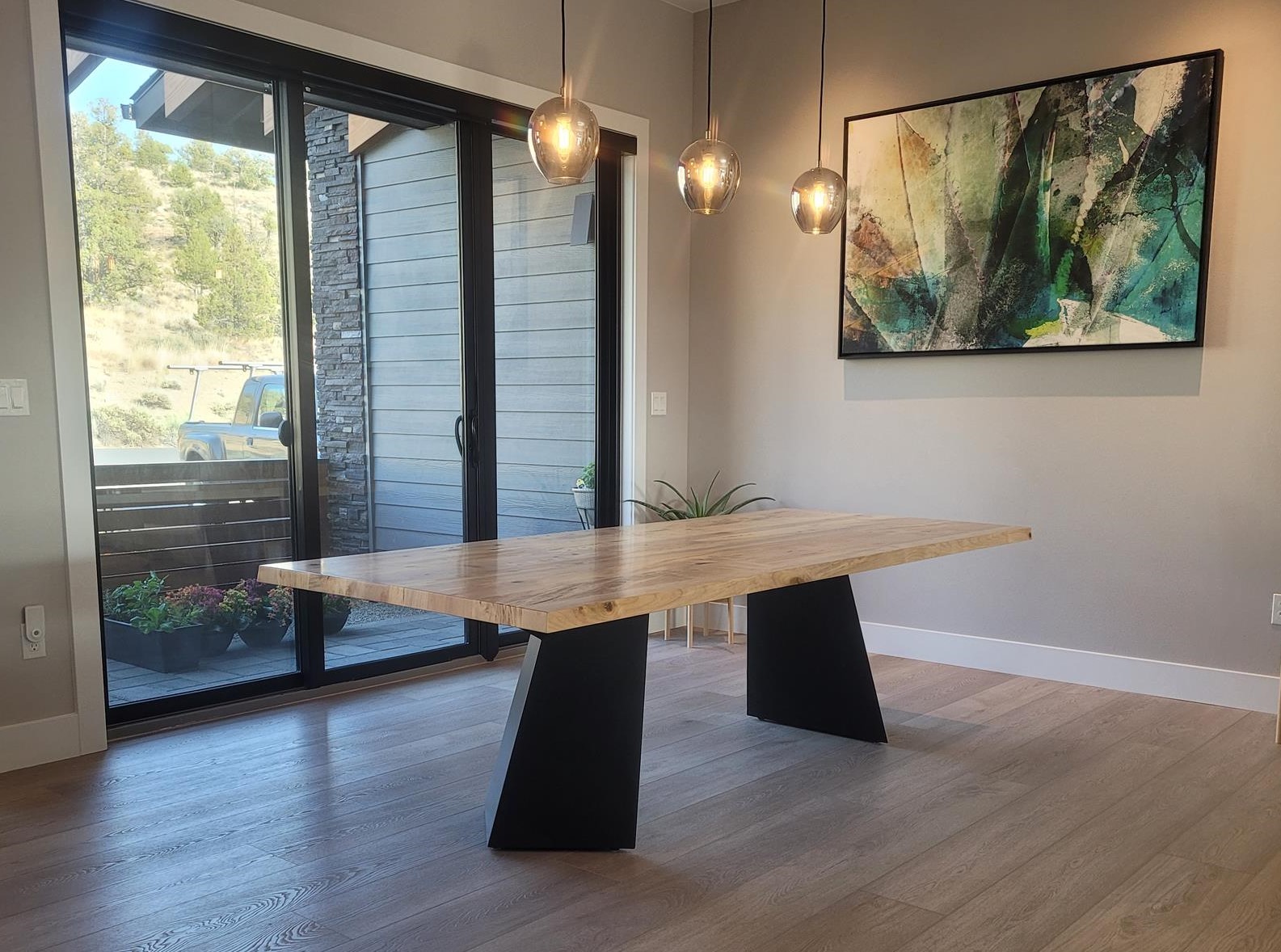Picking the Perfect Table: What Styles Work Best for Your Home?
Picking the optimal dining table for your home can be a nuanced procedure that stabilizes aesthetic appeals and capability. To navigate these choices successfully and discover a table that absolutely complements your home, think about the adhering to facets in detail.
Evaluating Your Area
Reviewing the measurements and layout of your dining area is a critical primary step in selecting the ideal dining table. Begin by gauging the size and size of the room, accounting for doorways, windows, and other architectural functions that might affect table positioning. This makes certain that your table not just fits yet additionally permits comfy motion around it.
Think about the variety of people you normally amuse. A table must fit your family's everyday requirements while providing adequate flexibility for occasional guests. As a rule of thumb, allocate at the very least 24 inches of table size per individual to make certain a comfy dining experience.
It's also vital to maintain appropriate clearance around the table. Preferably, there must be at least 36 inches in between the table side and walls or other furnishings, allowing simple accessibility and motion. For areas where chairs with arms or additional storage space systems like buffets are involved, increasing this clearance to 48 inches is suggested.
Lighting and ambience play considerable roles. Guarantee that your dining table aligns with existing lights fixtures or prepare for sufficient lighting remedies. This extensive spatial analysis assurances that your table not just fits physically however also integrates with your room's total capability and visual.
Popular Table Styles

Standard dining tables commonly feature ornate details, bent legs, and abundant timber surfaces, evoking a sense of classic style. They are best for homes with traditional design or those wanting to add a touch of sophistication to their eating location.
Modern dining tables focus on simpleness and tidy lines, typically integrating materials like glass and steel. These tables are suitable for contemporary spaces, giving a smooth and uncluttered appearance that enhances minimalist layout ideologies.
Rustic table, on the other hand, stress natural materials and a handcrafted look - dining room table legs. They commonly feature redeemed wood and a troubled surface, creating a cozy and welcoming ambience. These tables work well in farmhouse-style homes or those looking for a comfortable, natural feel
Industrial eating tables integrate raw materials such as metal and wood, frequently showcasing a practical aesthetic. This design is well-suited for loft spaces or urban rooms, including a touch of sturdy charm and durability to the eating experience.
Each design provides distinctive advantages, making it important to select one that lines up click site with your home's overall style and your individual preferences.
Product Choices
When selecting a table, the selection of material plays a critical function in establishing both the table's aesthetic appeals and capability. Wood, metal, glass, and composite products each offer distinct benefits and obstacles, making it vital to straighten the material with your home's design and way of living needs.
Wood is an ageless and flexible alternative, available in ranges such as oak, walnut, and mahogany. Recognized for its durability and warmth, wood matches both typical and modern interiors. It requires regular maintenance to stop scrapes and bending.
Steel tables, often crafted from stainless steel, aluminum, or wrought iron, are applauded for their modern appeal and robustness. They are especially fit find for industrial or minimalist settings but can be susceptible to dents and might feel cool to the touch.
Glass table bring an air of elegance and openness, ideal for smaller spaces as they produce an impression of more space. While easy to clean, glass can be susceptible to smudges and calls for mindful handling to avoid chips and cracks.
Composite materials, such as MDF and plywood, deal cost-efficient and personalized remedies, though they might lack the longevity of natural materials. Picking the appropriate product ensures your table is both a functional property and an aesthetic delight.
Sizes And Shape Considerations
After determining the ideal product for your eating table, the next consideration is picking the ideal form and size to fit your space. Alternatively, round tables promote a feeling of intimacy and are superb for smaller dining locations, urging conversation by removing corners and making everybody really feel equally included.
As a rule of thumb, allocate at least 24 inches of table size per person to make certain comfortable dining. In addition, take into consideration the table's clearance space: there ought to be at least 36 inches between the table edge and the walls or various other furniture. Expanding tables offer flexibility if you often host bigger gatherings, providing added seats when required without occupying added room daily.
Matching Your Decor
Selecting a table that balances with your existing design is essential in producing a natural and welcoming room. Begin by important link assessing your existing interior decoration style, whether it be modern, conventional, rustic, or diverse. The table should complement the total aesthetic, not take on it. A sleek, minimal table with clean lines is optimal for a modern-day home, while a vintage, elaborate table suits a more traditional setting.
If your decoration features warm tones and natural materials, think about a wood table to enhance the organic feel. On the other hand, a glass or metal table might be extra appropriate in a room dominated by cool shades and industrial aspects.
Texture plays an essential duty as well. A rough-hewn, reclaimed wood table can add personality to a rustic area, while a sleek marble surface area can boost an extravagant dining location. Take into consideration the scale and percentage of the table in relationship to the room size and existing furnishings. A well-matched eating table not just improves visual appeal but also enriches the total dining experience.

Final Thought
Picking the perfect eating table demands mindful consideration of space, style, products, form, and dimension (dining room table legs). Traditional tables complement traditional insides with abundant timber coatings, while modern tables suit contemporary settings via glass and metal. Rustic styles introduce heat by means of natural products, and industrial designs boost urban environments with raw aspects. Balancing the dining table with existing decoration makes sure both capability and aesthetic charm, adding to a natural and visually pleasing eating area.
 Amanda Bynes Then & Now!
Amanda Bynes Then & Now! Jason J. Richter Then & Now!
Jason J. Richter Then & Now! Jenna Von Oy Then & Now!
Jenna Von Oy Then & Now! Marla Sokoloff Then & Now!
Marla Sokoloff Then & Now! Samantha Fox Then & Now!
Samantha Fox Then & Now!